Create Your Own Window Art
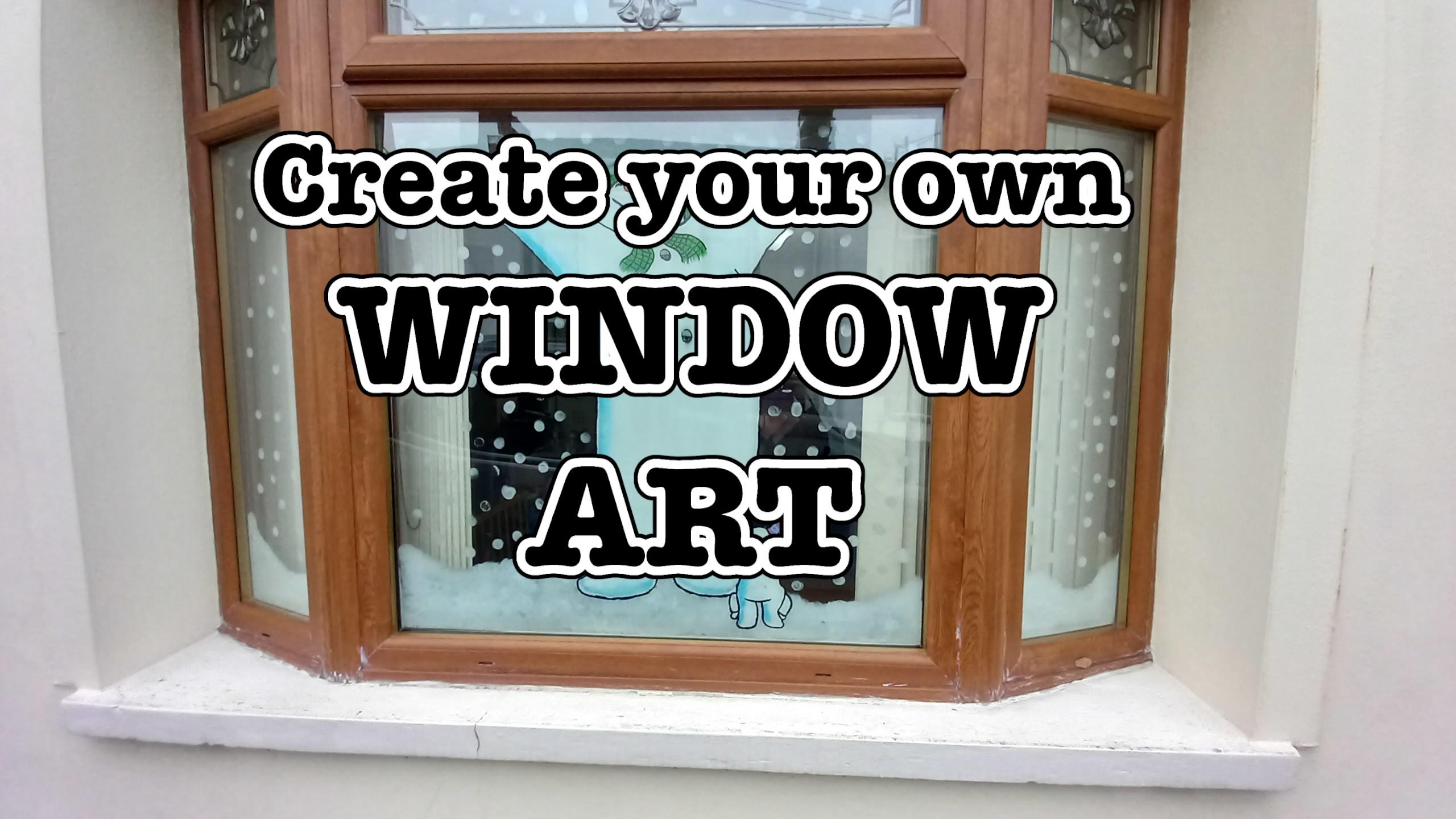
How to create your own fantastic window art!
I recently painted my sister's living room window for the festive season. She posted it on social media and I received a lot of positive responses as well as a number of people direct messaging me asking for help and advice. I don't do this as a living, I just paint my sister's window and that's about it.
As so many were asking for the help and advice, I decided to share the process with you.
There are probably other ways to do this, but this is how I did it
Supplies
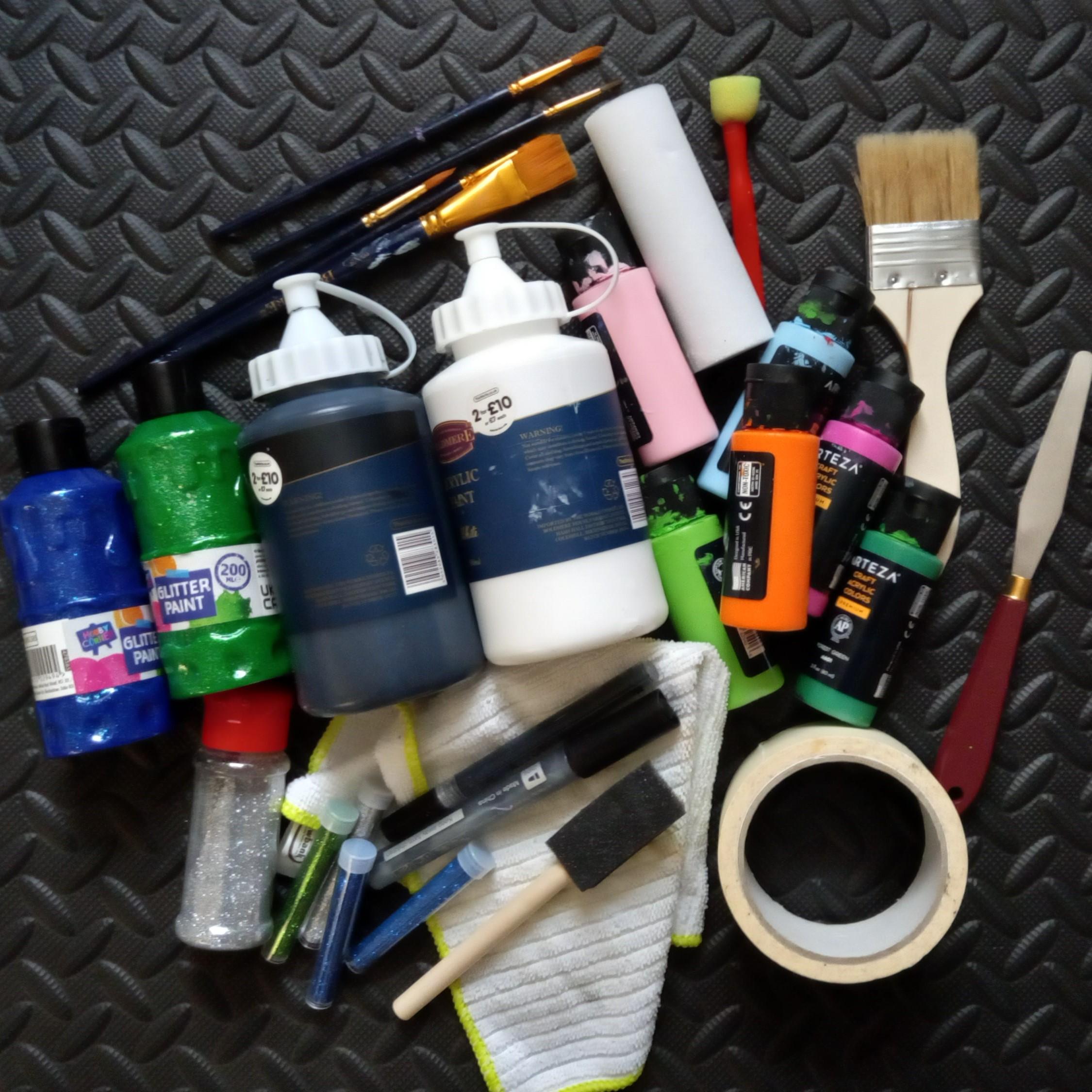
- Acrylic paints - standard ones from any craft store
- Glitter acrylic paints (optional)
- More glitter to add to paint (optional)
- Various size paint brushes, sponge brushes etc
- Acrylic paint pen or a Sharpie (optional)
- Painter's tape (optional)
- A rag / cloth (optional but recommended)
- Scraper (optional)
- Q-Tips / cotton buds (optional)
- Sponge dabbers (optional)
If you are concerned about removing Sharpie or permanent markers from glass, this link from Choosemarker which will show four easy ways to remove it.
Draw / Paint Your Outline
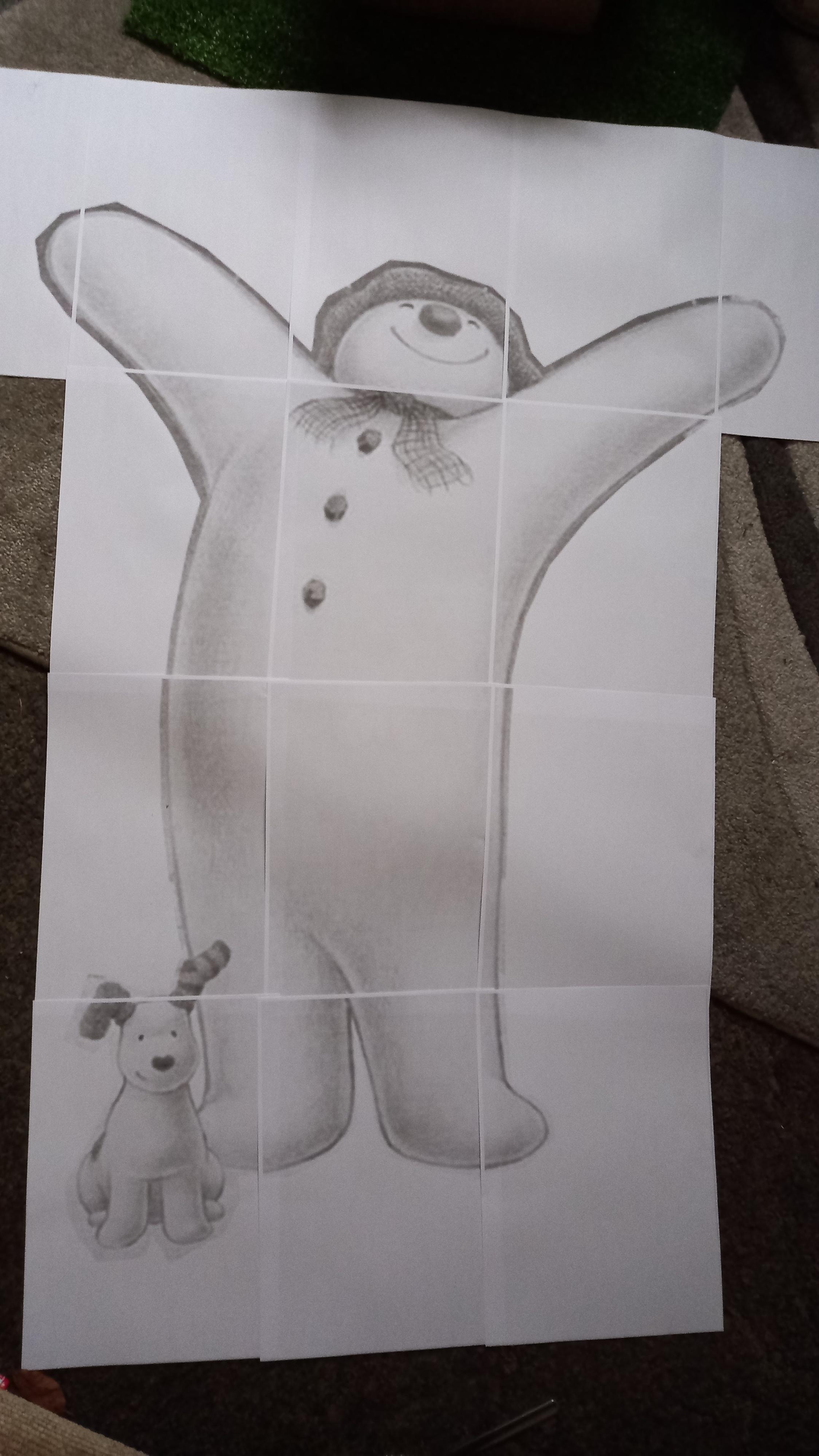
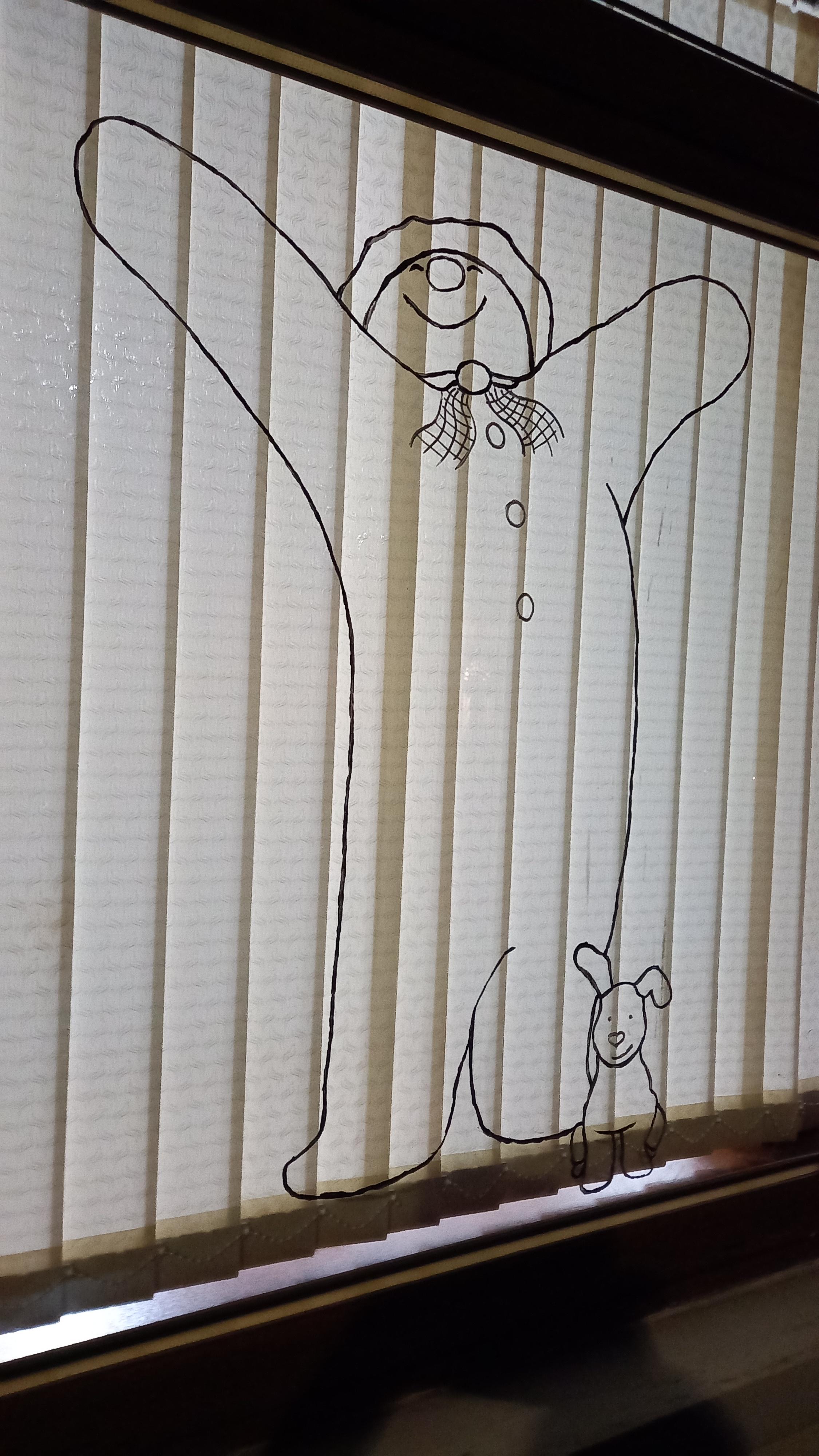
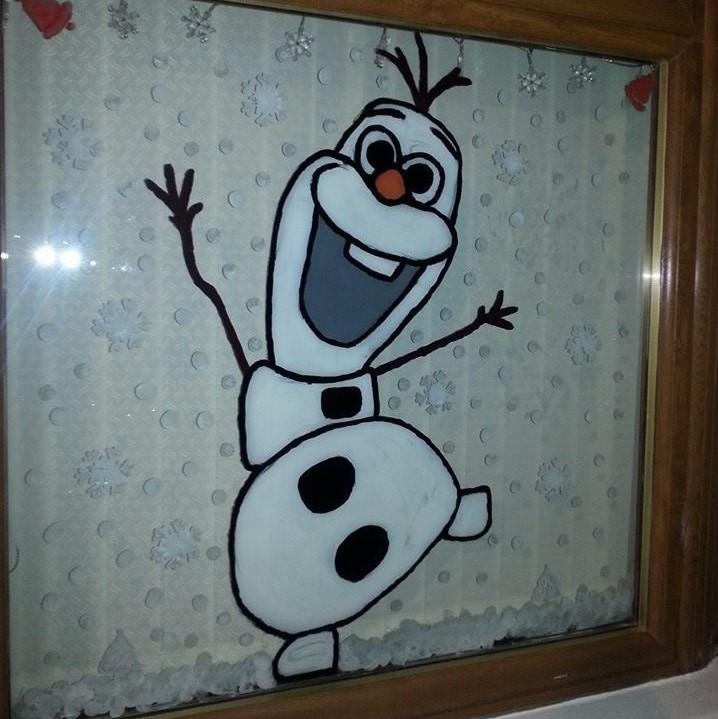
You're going to be painting on the inside of your window so the usual process for painting is going to be in reverse, i.e. you're going to do the last part first!
You have two choices here:
- Draw / paint in freehand - This is what I usually do, but I was very 'time-poor', the previous Olaf character was freehand
- Use a print out to trace on or stencils
Option 1:
- Using your acrylic paint pen / Sharpie / paint and thin brush, simply draw / paint in your outlines
- Once dry, paint them again so they are opaque / you can't see through them
Option 2:
Double / triple glazing will not help here so ensure, when drawing in your outline, you are directly in line with the area you are drawing. If you look at the outlines from another angle, the image will be out of shape, so look straight at your stencil and the work and move your body / adjust your eye line to accommodate!
- Measure your space / window
- Find the image you want to use, or draw it freehand and scan it in
- Using a programme that can enlarge your image on the current size 'paper' (I used Publisher with my paper size being 102cm by 98cm), scale up the image until it fits in your space.
- Print it out, use draft quality to save ink.
- My printer will only print on A4 so I lay all the images on the floor and stuck them all together like a big jigsaw puzzle.
- Using your painter's tape, stick this to the outside of your window - see below if you are cannot do this
- Go inside and trace your image outline play outlines of details (eg buttons, nose, eyes and mouth)
- Repaint all outlines until opaque
If you cannot fix the image to the outside of the window, cut around the image, stick that to the inside of the window and draw / paint around it. Cut out the internal parts of the features, place the whole image back on the window then draw in the cut-outs.
If you make a mistake:
- When wet: Use a Q-Tip or cotton bud to wipe detail away. Use a rag / cloth for larger areas. Clean away any smudges as these could show through when finished
- When dry: Use a scraper to scrape away your errors
Start the Detail
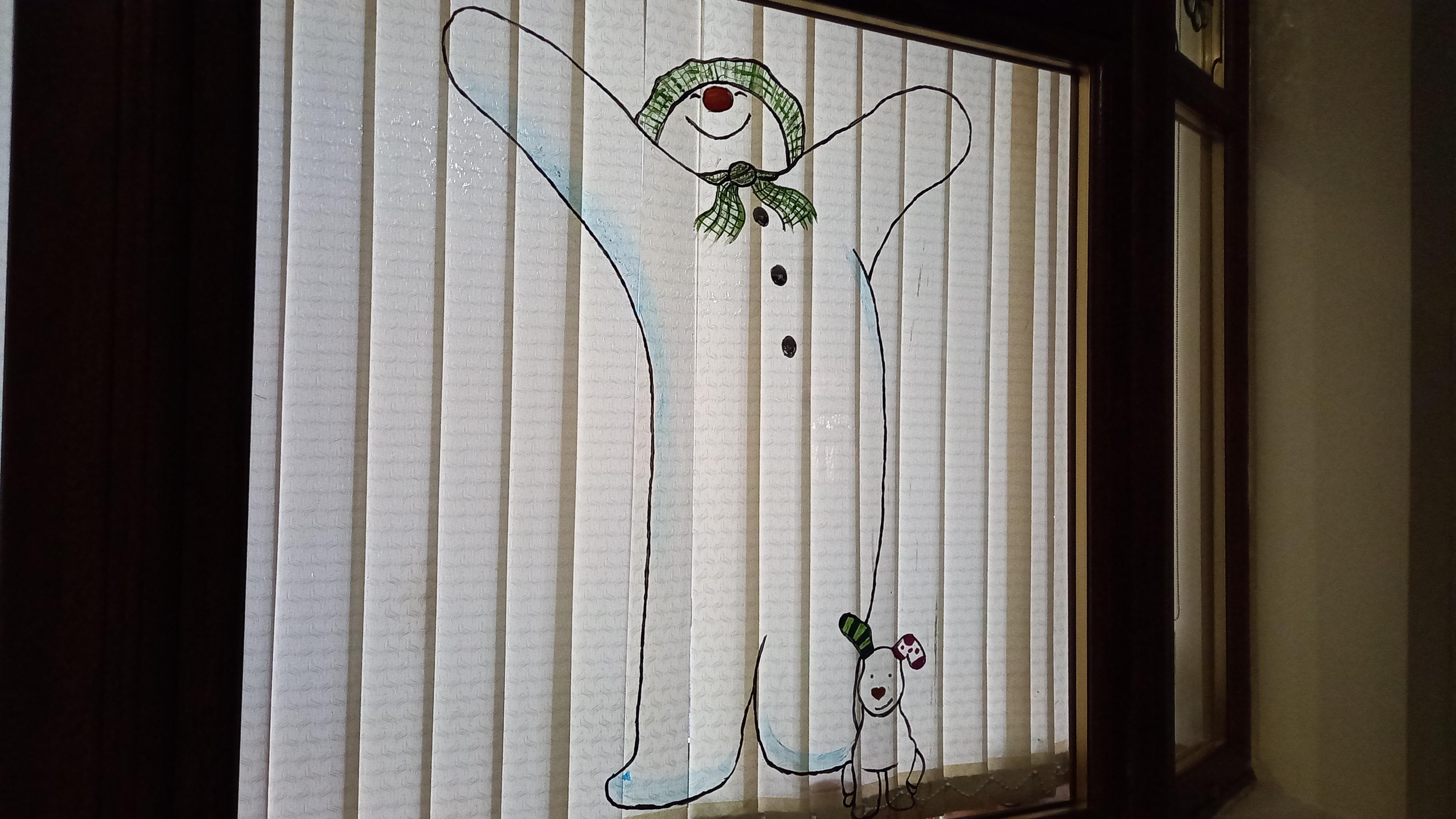
Add your initial details, these would usually be the last item when painting on a canvas but the first in this instance. Ensure all your outlines are opaque
Outline them first then paint in highlights and detail, such as:
- Eyes
- Nose - with a highlight
- Mouth
- Scarf - check design
- Hat - knitted look
- Buttons - shading first then main colour
- Dog ears / socks - spots and stripes first
- Shading on the sides of the project. In this example, blue glitter paint, with extra glitter, was added down the sides and in the 'dark' areas e.g. feet, legs etc
Once all the details and highlights are dry, add the main colours
In this project, the dots and stripes on the the dog's sock ears were added first.
The scarf and the hat had fine detail, for a check-style scarf and the knitted look of the hat.
Block in the Background of the Details
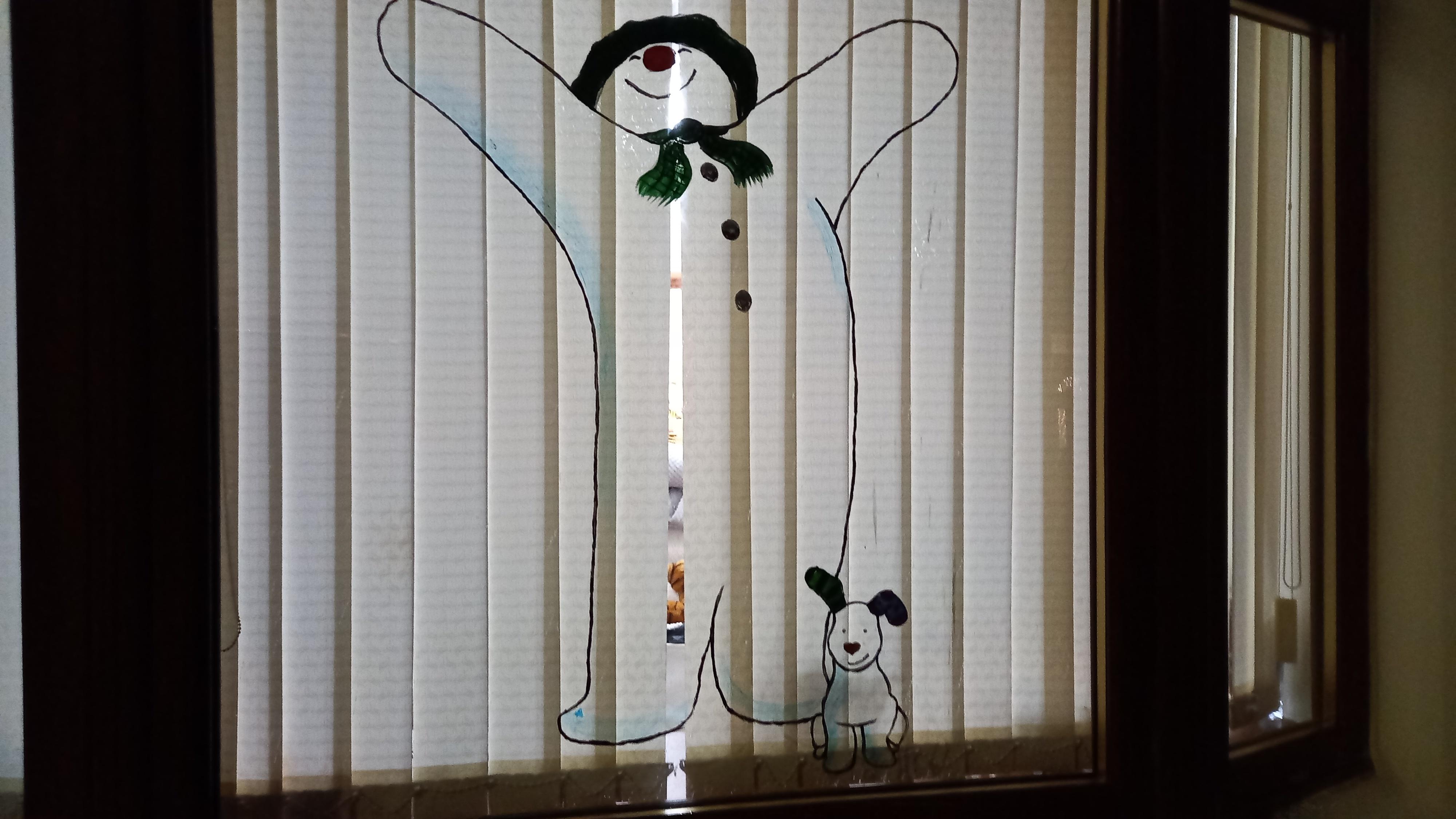
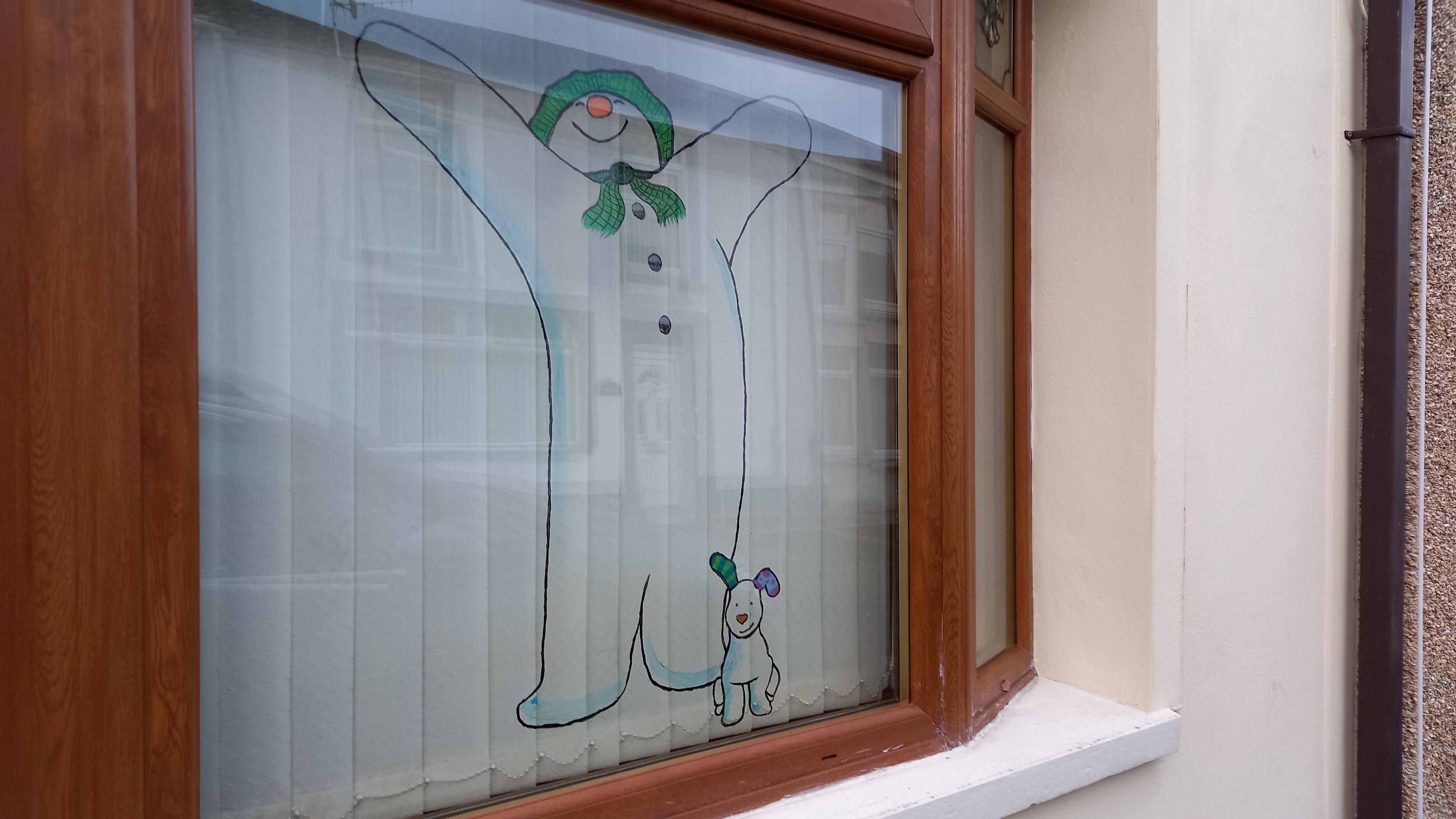
Once the details have dried, you can now add the background colours.
In this project, the green for the main body colour of the hat and scarf, the green and blue for the dog ear socks
Add Main Colour
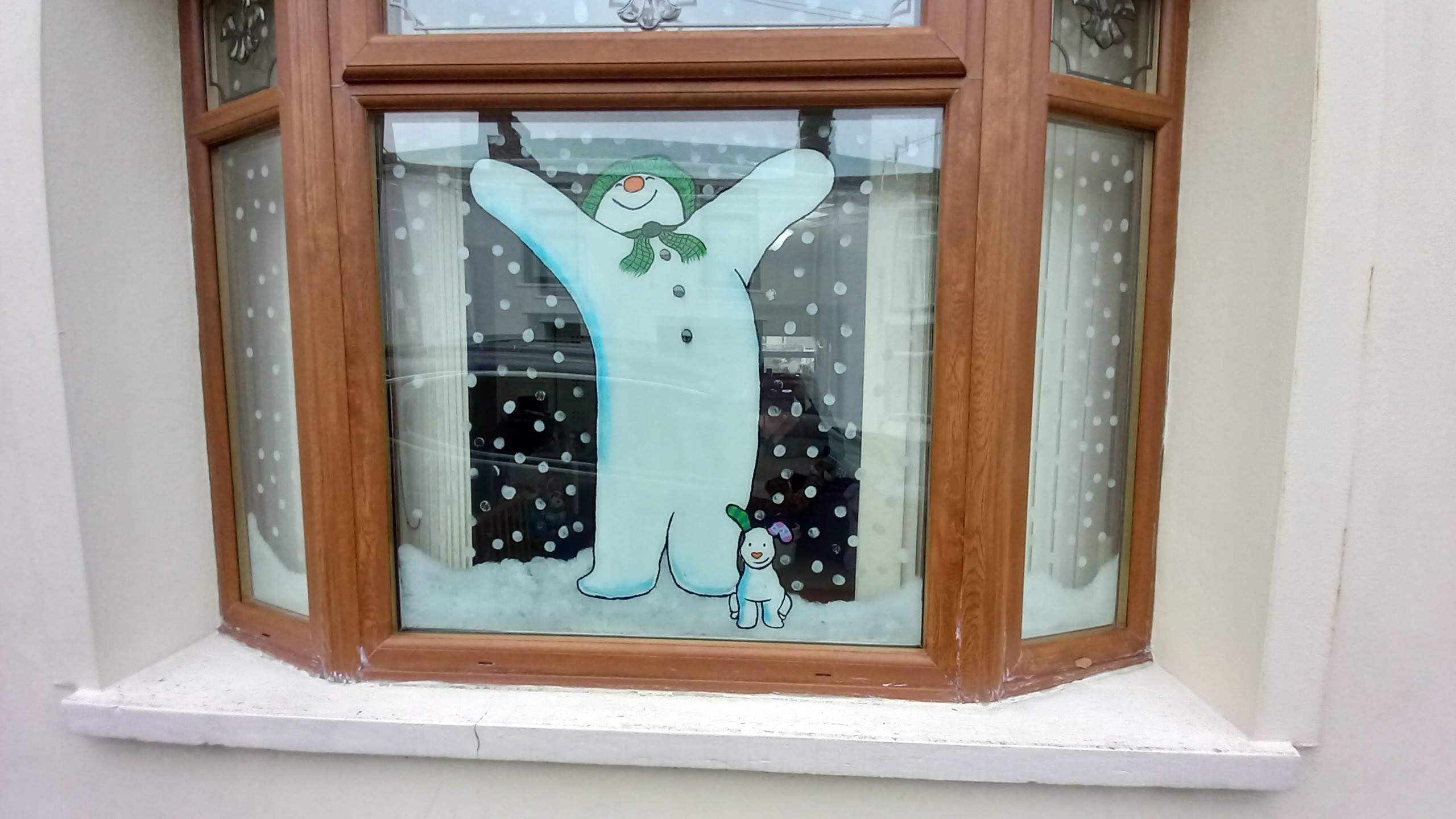
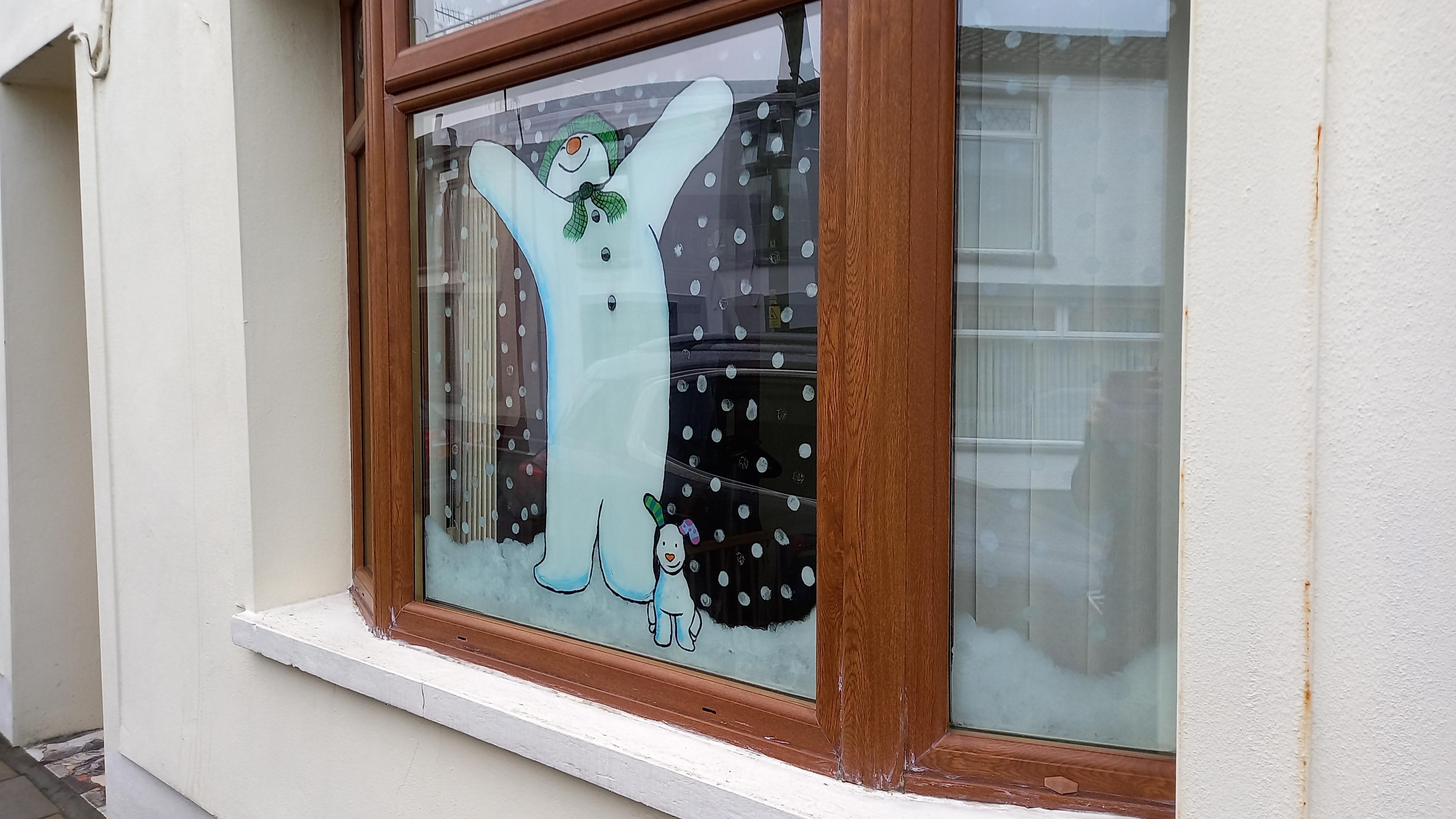
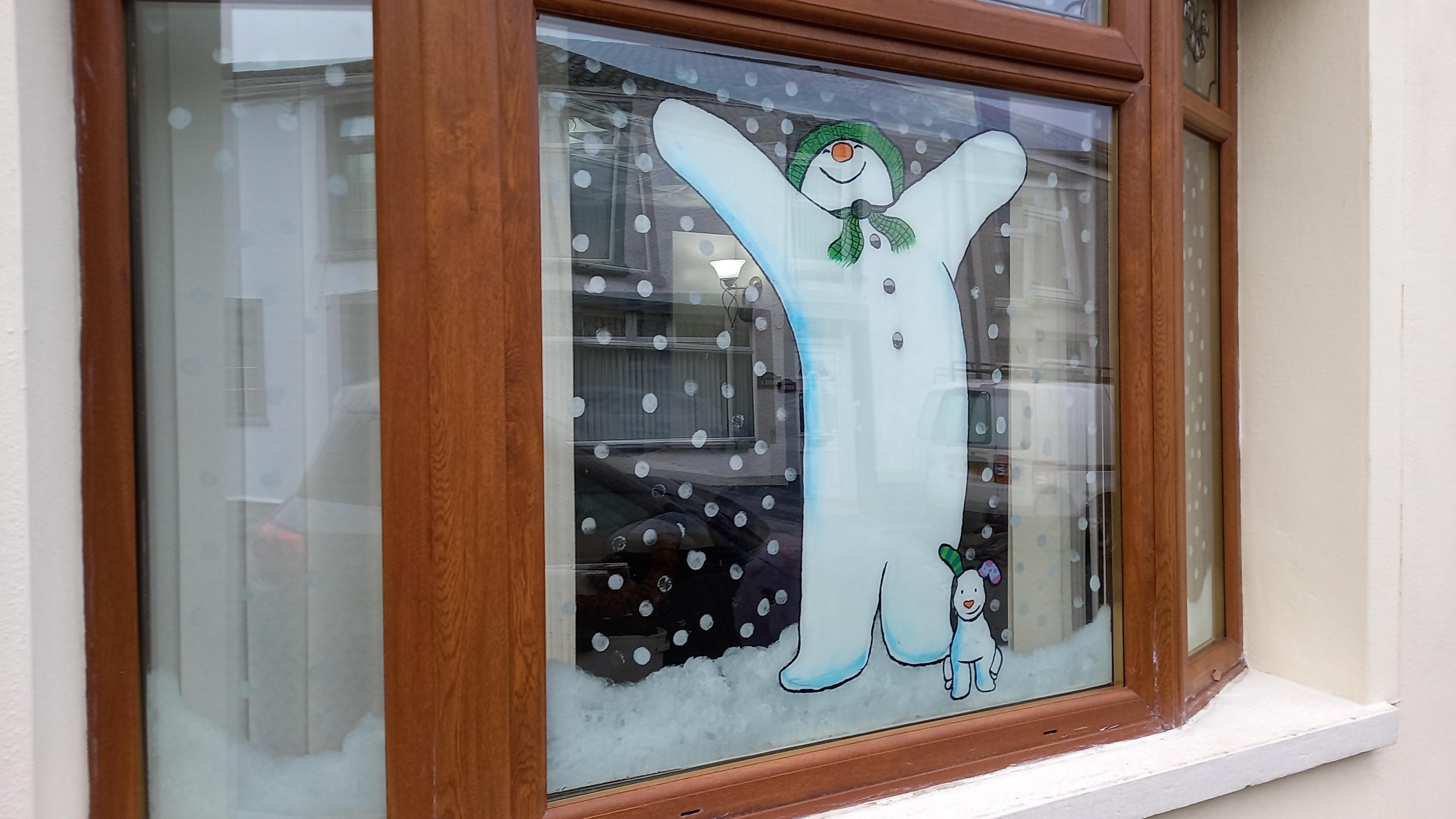
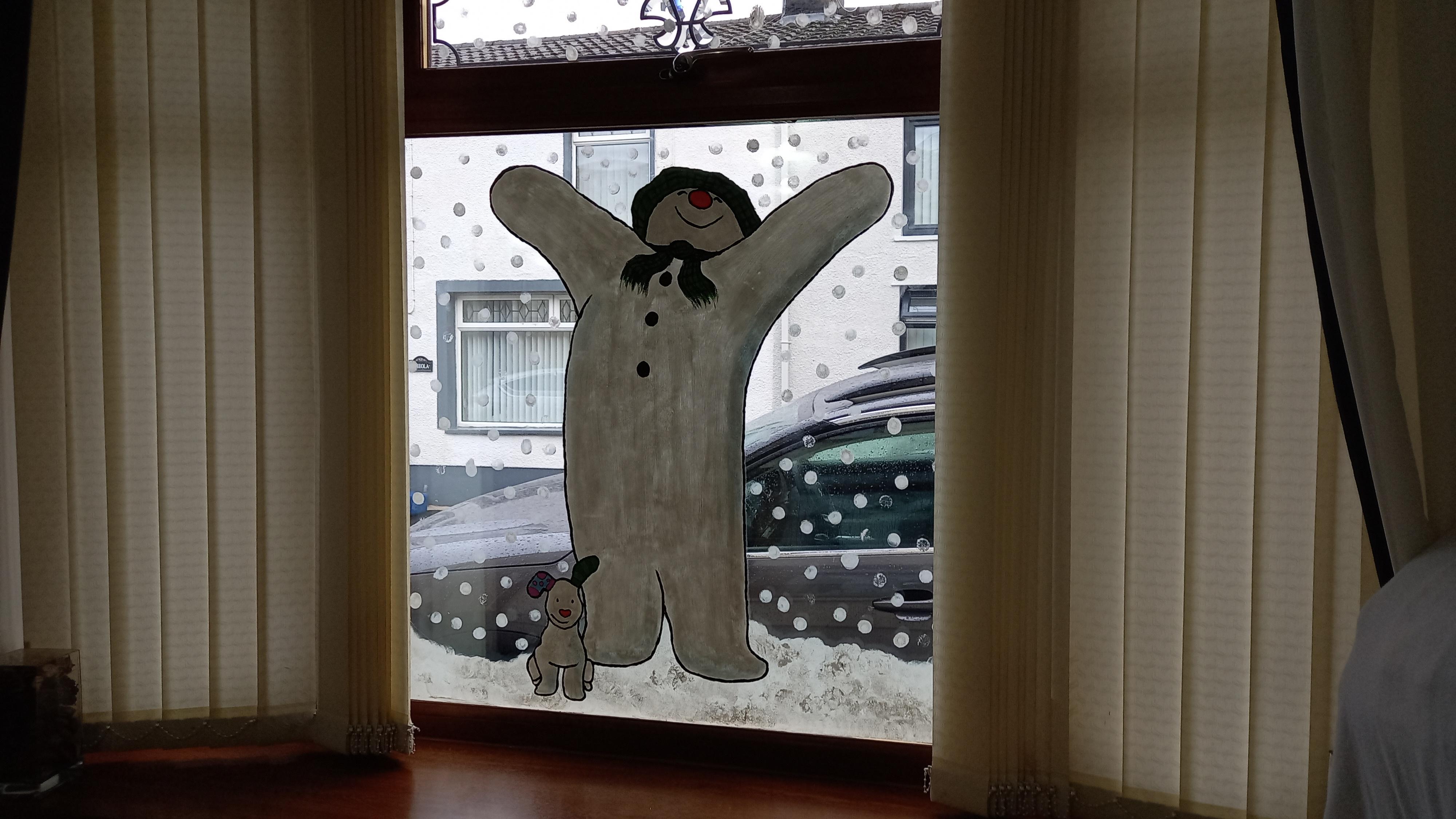
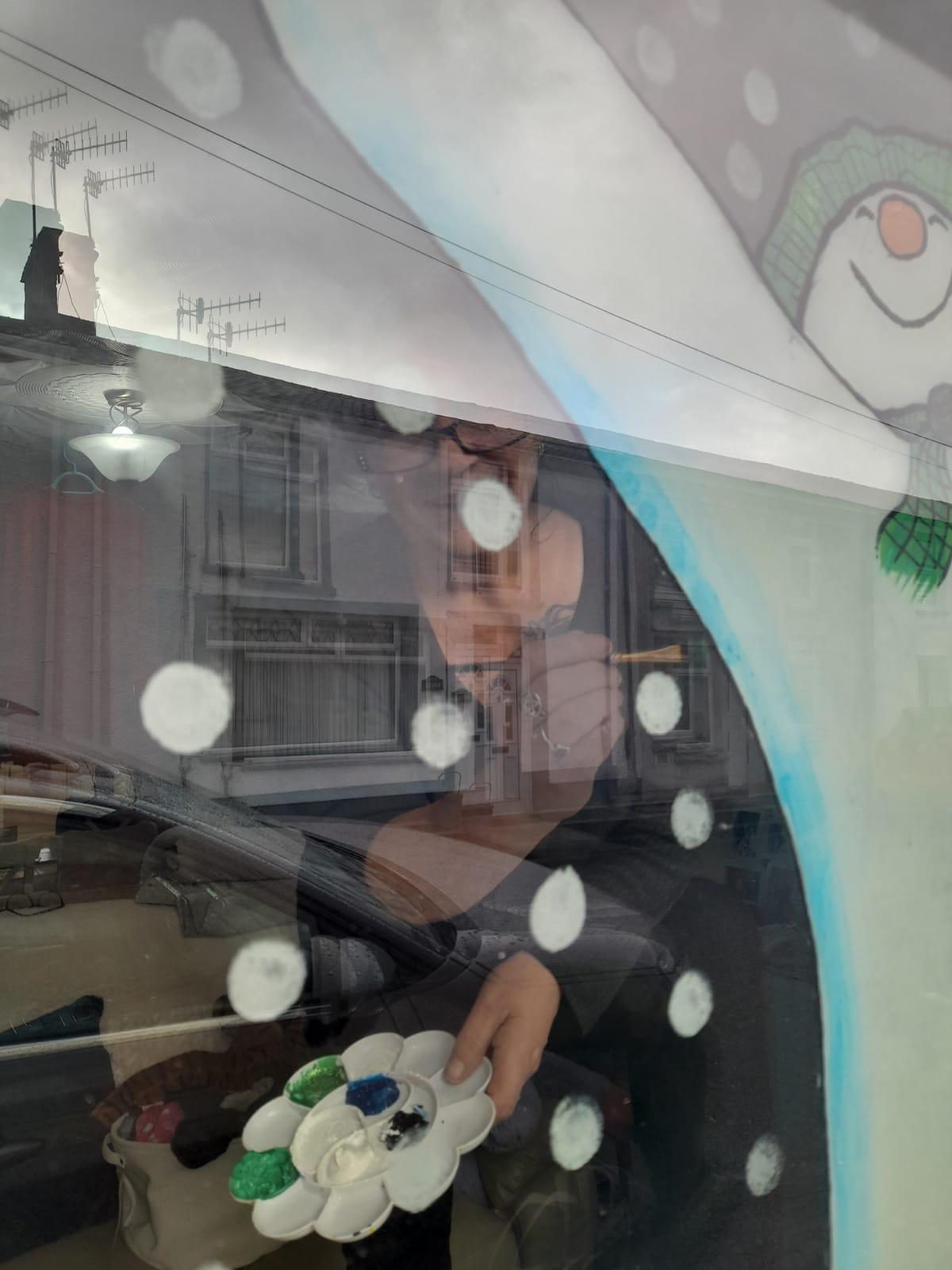
In this example, four coats of white paint were used.
This will be your last coat, if you're confused, yes, it would usually be the first coat when starting a project on the canvas.
My sister added the snow using sponge dabbers. And yes, that is my painting away inside the house. I also added snow on the whole of the bottom of the window for the characters to 'stand' on.
Once dried, paint the outside outlines, body etc again, it just makes it look nice
If you really want to, and I did this, paint him once more on the inside so he looks good both ways
Add Your Bling
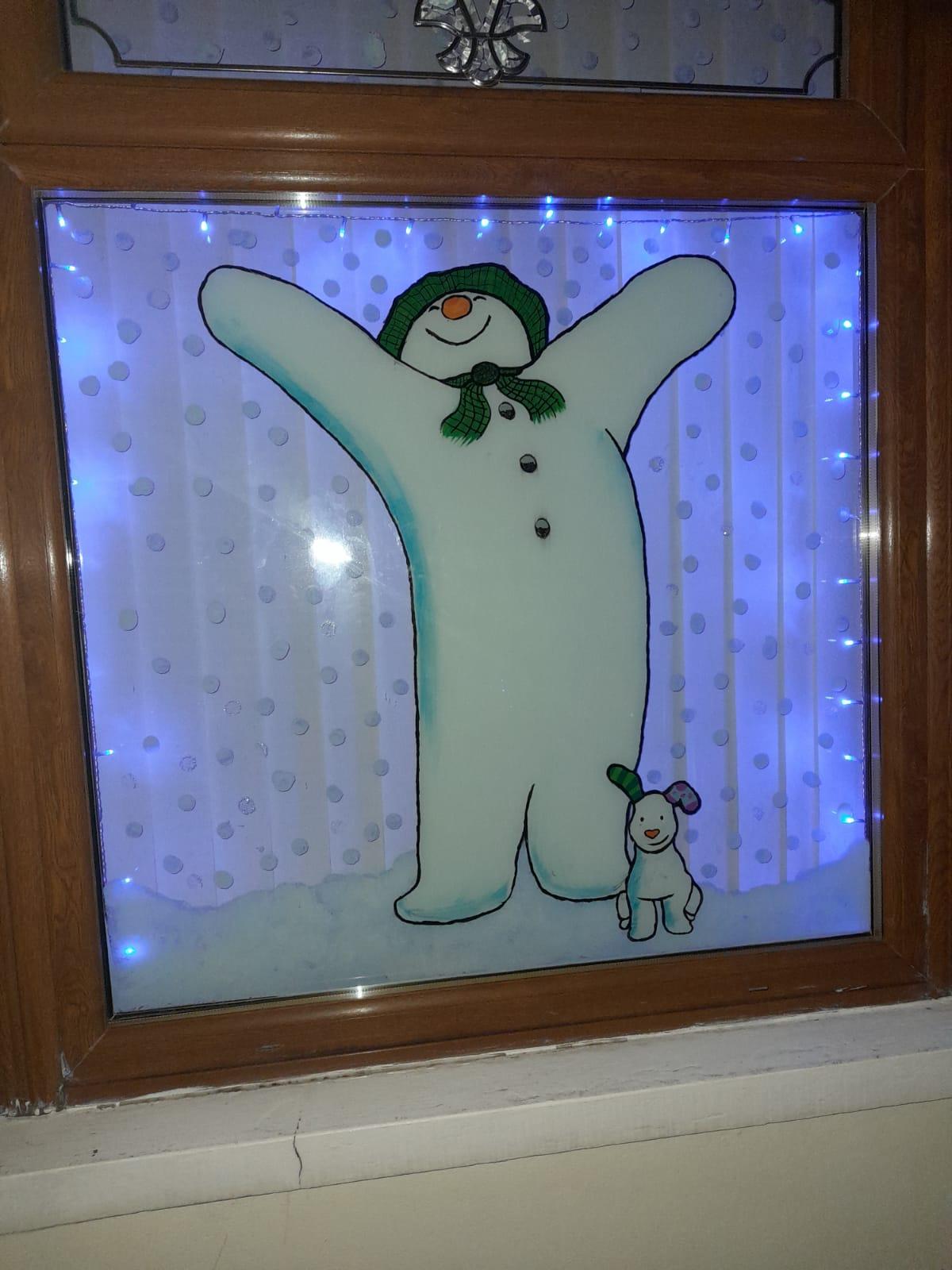
For this project, my sister added her spin on it with some blue festive lights.
Cleaning It All Off
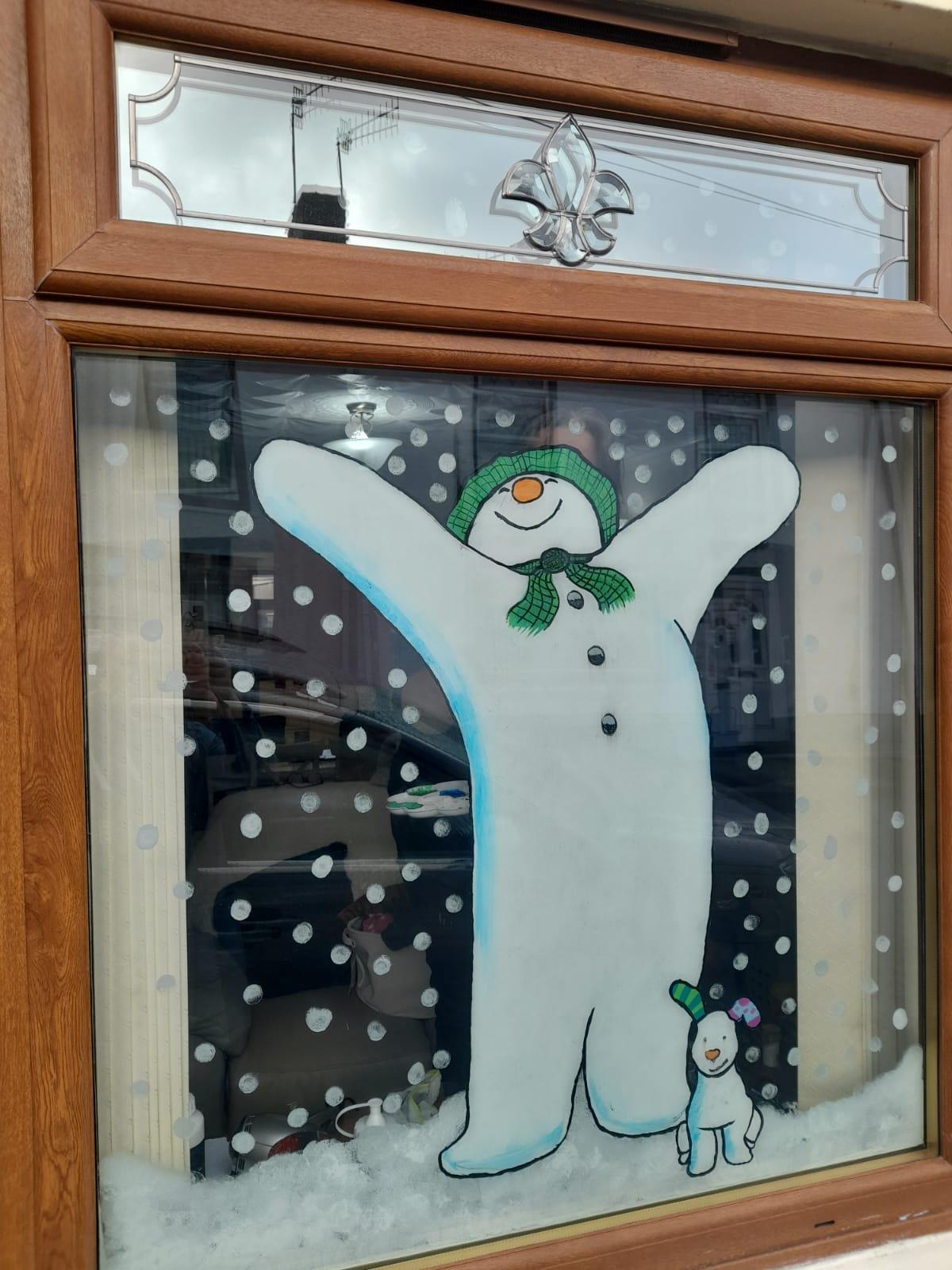
This is the part I never do! But, my sister assures me that hot soapy water and a scraper works well.